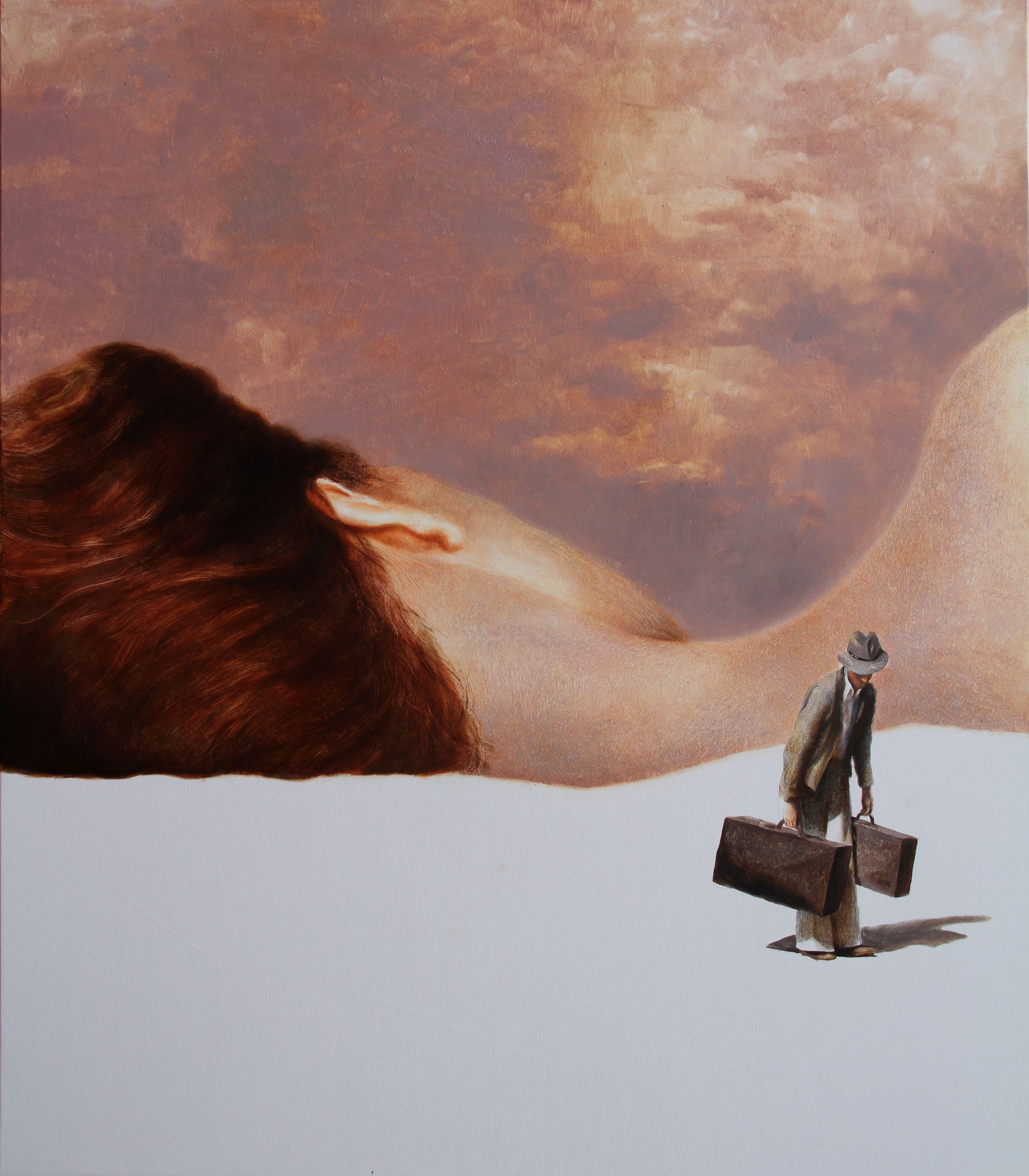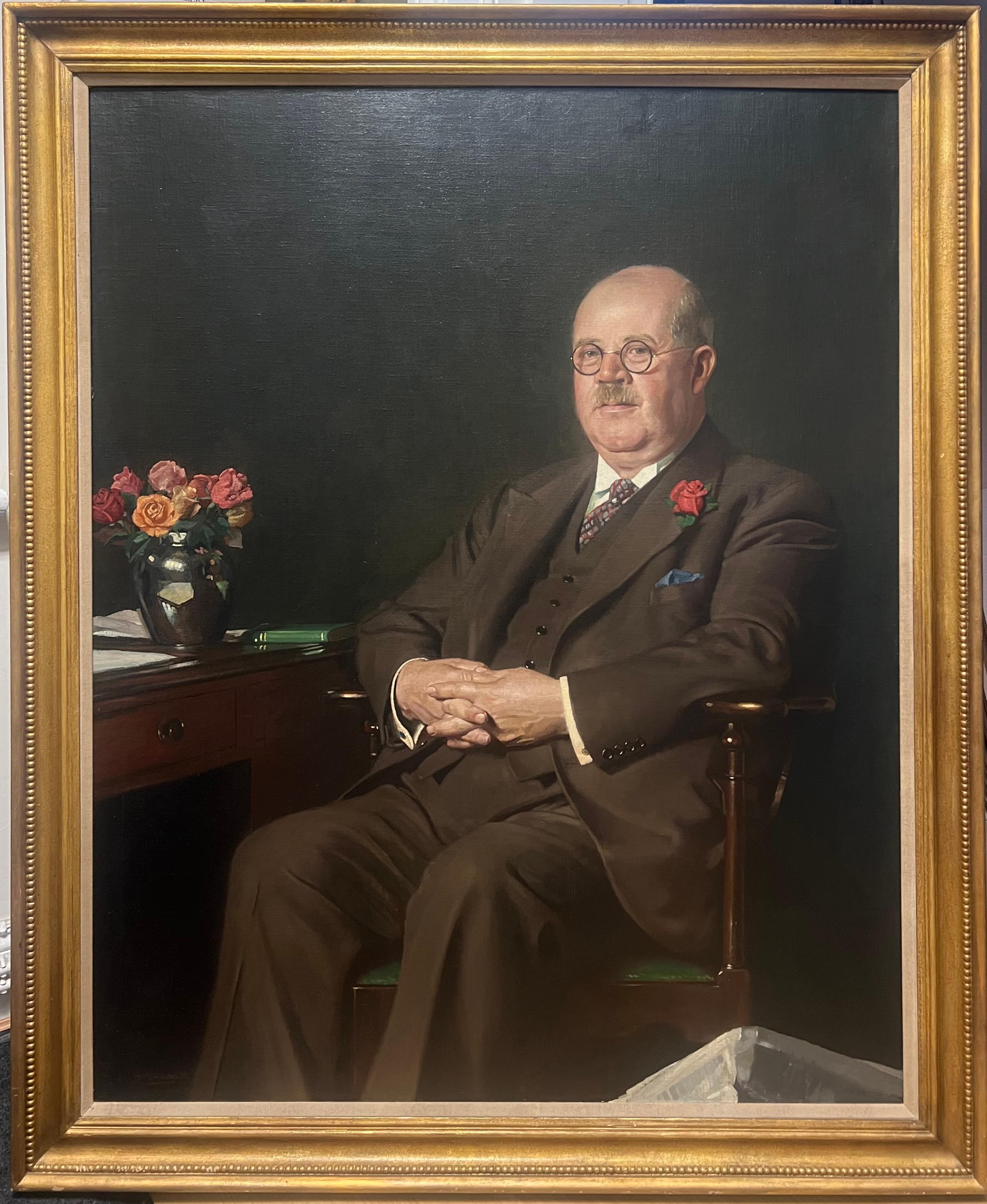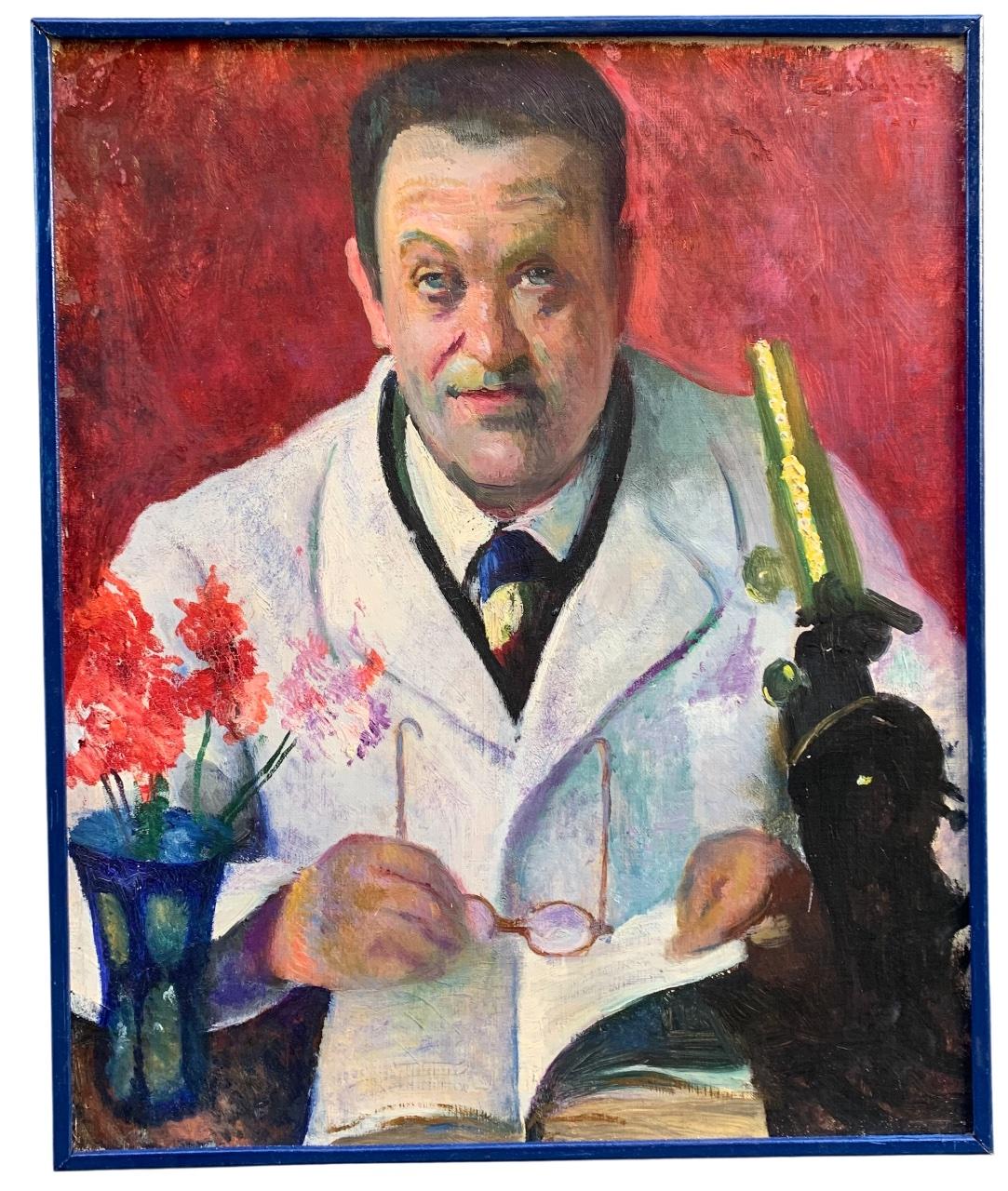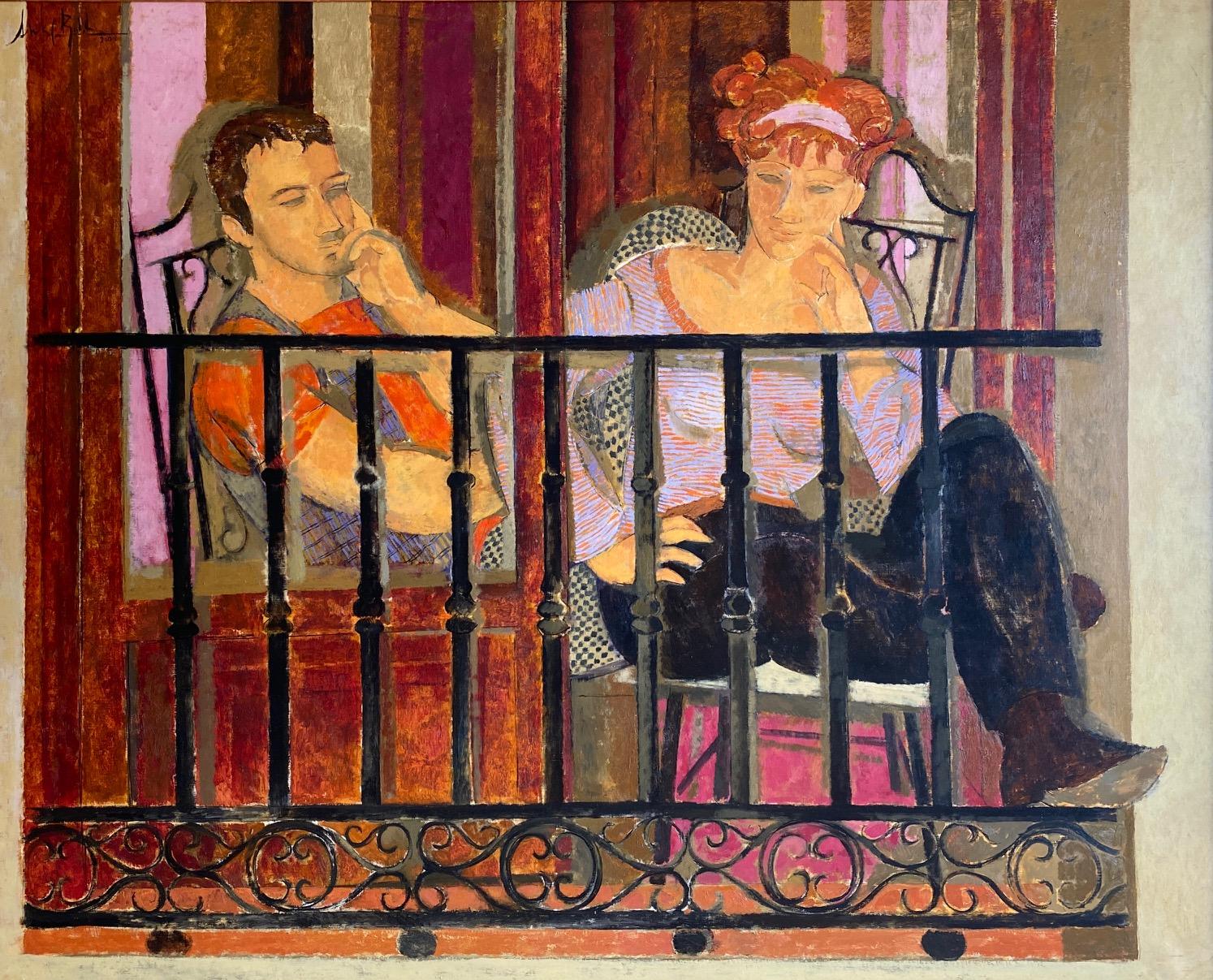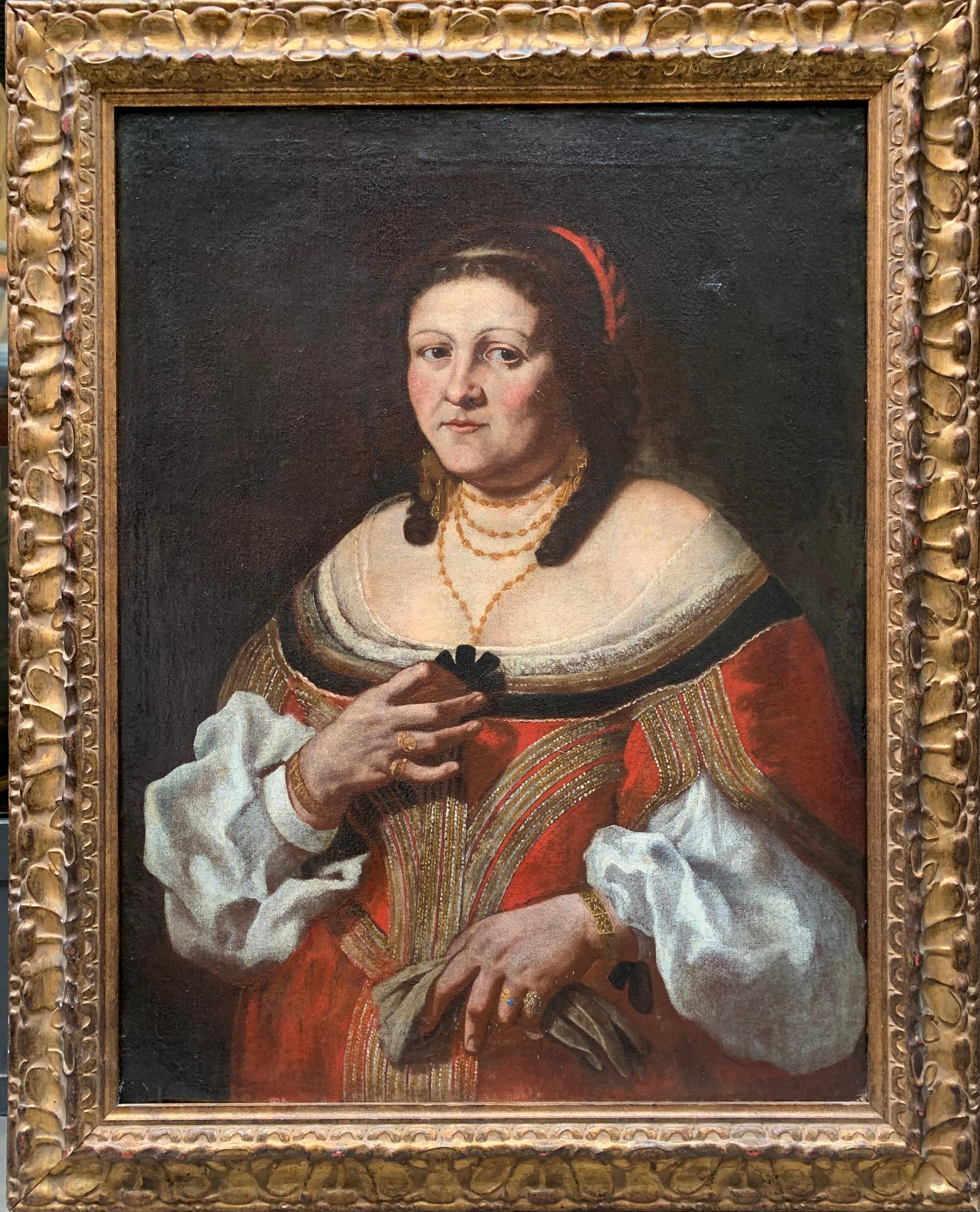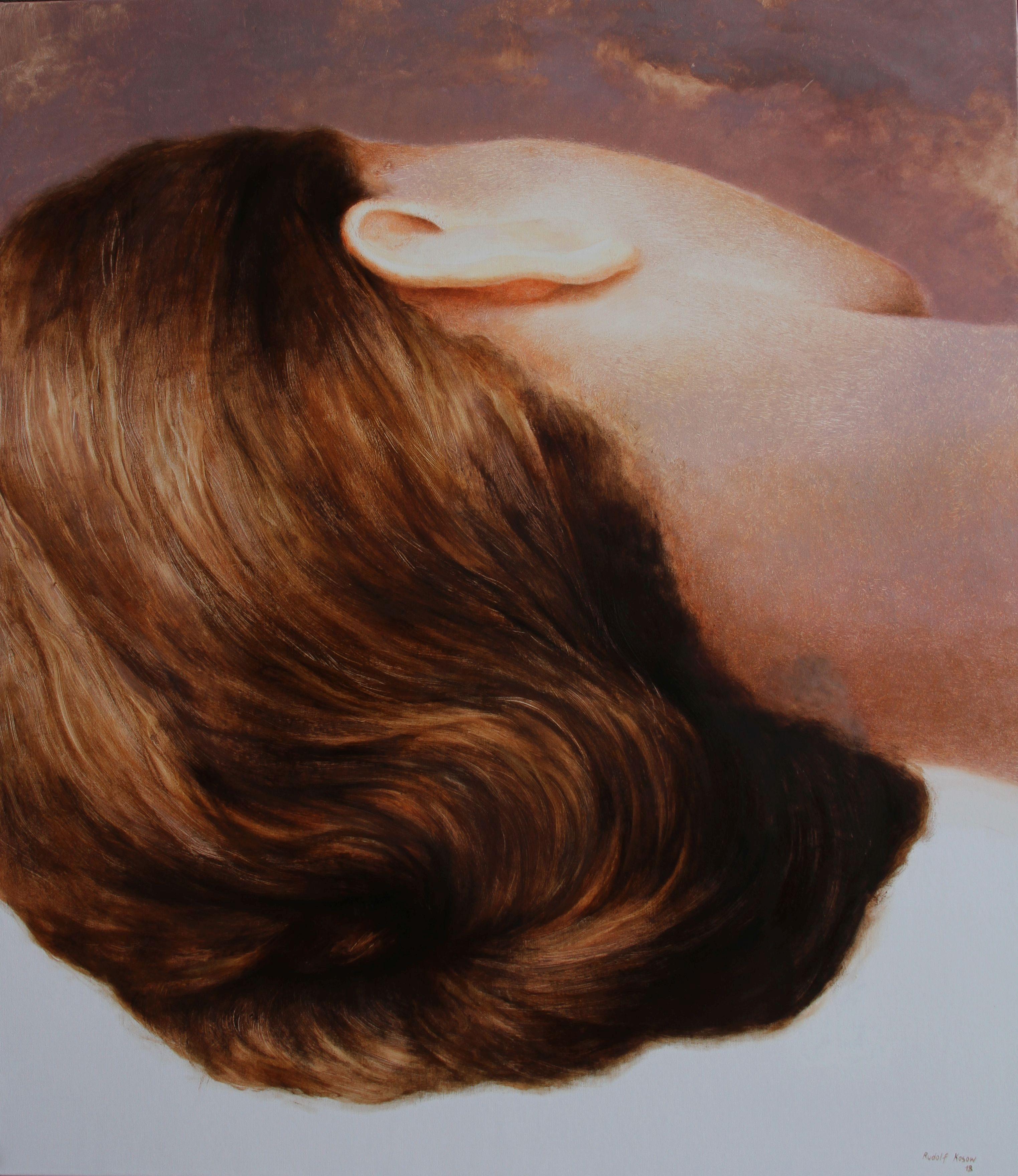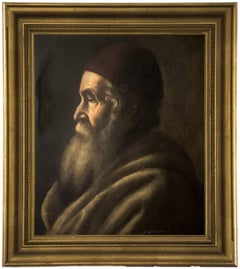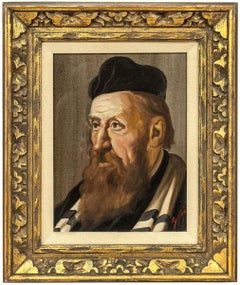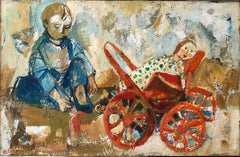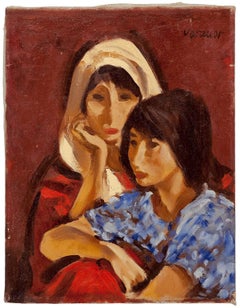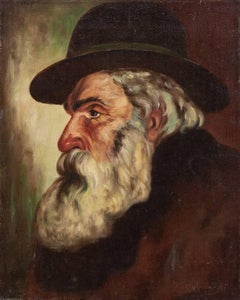
Portrait Of Polish Jewish Rabbi Gentleman
View Similar Items
Want more images or videos?
Request additional images or videos from the seller
1 of 9
Eugeniusz KazimirowskiPortrait Of Polish Jewish Rabbi Gentleman
Price:$1,800
About the Item
- Creator:Eugeniusz Kazimirowski (1873 - 1939, Polish)
- Dimensions:Height: 16.5 in (41.91 cm)Width: 13.25 in (33.66 cm)
- Medium:
- Period:
- Condition:
- Gallery Location:Surfside, FL
- Reference Number:1stDibs: LU3821968063
About the Seller
4.9
Platinum Seller
Premium sellers with a 4.7+ rating and 24-hour response times
Established in 1995
1stDibs seller since 2014
1,792 sales on 1stDibs
Authenticity Guarantee
In the unlikely event there’s an issue with an item’s authenticity, contact us within 1 year for a full refund. DetailsMoney-Back Guarantee
If your item is not as described, is damaged in transit, or does not arrive, contact us within 7 days for a full refund. Details24-Hour Cancellation
You have a 24-hour grace period in which to reconsider your purchase, with no questions asked.Vetted Professional Sellers
Our world-class sellers must adhere to strict standards for service and quality, maintaining the integrity of our listings.Price-Match Guarantee
If you find that a seller listed the same item for a lower price elsewhere, we’ll match it.Trusted Global Delivery
Our best-in-class carrier network provides specialized shipping options worldwide, including custom delivery.More From This Seller
View AllPortrait of a Rabbi Early 20th C. Judaica Painting
Located in Surfside, FL
Genre: Classic
Subject: Portrait
Medium: Oil
Surface: Canvas
Dimensions: 20.25" x 17.25"
Dimensions w/Frame: 25.75" x 22.75"
Category
Early 20th Century Portrait Paintings
Materials
Canvas, Oil
The Cantor, Vintage Judaica European Oil Painting
Located in Surfside, FL
Vintage Judaica oil painting, Poland, signed illegibly by artist l.r.
Category
20th Century Portrait Paintings
Materials
Canvas, Oil
Israeli Oil Painting Ruth Schloss Child, Doll, Wagon, Kibbutz Social Realist Art
By Ruth Schloss
Located in Surfside, FL
Large magnificent colorful Ruth Schloss oil painting of a child with a wagon with a doll or a baby in a carriage stroller.. Signed in Hebrew
size measures 31x43 with frame , 23x35.25 without the frame. (this is being sold unframed).
Ruth Schloss (22 November 1922 – 2013) was an Israeli painter and illustrator who mainly depicted neglected scenes such as Arabs, transition camps, children and women at eye-level as egalitarian, socialist view via social realism style painting and drawing.
Schloss became Israeli painting’s sensitive, conscious, remembering eye.
Ruth Schloss was born on 22 November 1922, in Nuremberg, Germany, to Ludwig and Dian Schloss, as the second of three daughters of bourgeois assimilationist Jewish family well-integrated into German culture. As the Nazis came into power in 1933, her family immigrated to Israel in 1937, and settled in Kfar Shmaryahu, then an agricultural settlement. Schloss studied at the Department of Schloss graphic design at "Bezalel" from 1938 to 1942 alongside Friedel Stern and Joseph Hirsch. She was a realistic painter who focused on disadvantaged people in the society and social matters as an egalitarian. Her realism was thus an “inevitable realism,” motivated by an inner necessity: the need to observe reality as it is.
Her painting repeatedly addressed the door pulled from its frame, employing drawing’s unique ability to stop time and prolong the image’s persistence in the retina, she repeatedly committed to paper - in a matter-of-fact, non-evasive manner devoid of mystery – man’s tendency to generate chaos, suffering and pain.
Throughout her life, Schloss remained minimalist. Painting about human fate was the main subject of her artworks. Her natural inclination was to describe the darker aspect of human existence.
1930s
The Schloss household was characterized by open, liberal spirit, in keeping with the parents’ progressive views. It deeply influenced Ruth’s mental development, as she learned to tie culture and art with sensitivity towards the weak and underprivileged.
In Jerusalem, she joined a commune of Hashomer Hatzair in which she shaped her socialist views, which she maintained throughout her long career.
1940s
In this period she mainly depicted landscapes of kibbutz and wretched women living hard life, children in huger, older people, refugees. After completing her art studies, Schloss joined a training group at Kibbutz Merhavia in 1942, and after two years moved to Karkur region, the nucleus established Kibutz Lehavot Habashan in the Upper Galilee. Through this time, she fell in love with the surroundings and drew landscapes. They are simple and direct with fresh, lucid lines. These paintings were selected as the main works of her first exhibition in 1949.
In early 1945, Schloss started to draw illustrations in the children’s magazine Mishmar Leyeladim, and designed the logo of Al Hamishmar, the paper’s new name in 1948. In 1948, upon the founding of Mapam (United Workers’ Party), she designed her party’s emblem, which became a well-known icon. She kept working as an illustrator for Mishmar Layeladim until 1949.
"Mor the Monkey" project yielded financial profits and this income was used for a study trip to Paris for two years. She was succesfull as illustrator however, she had inner conflicts of her identity as witnessed painter toward neglected class in Israeli society.
First Exhibition at Mikra-Studio Gallery, 1949
She presented forty drawings on paper in her first solo exhibition, representing a selection of the themes of kibbutz landscape, its lifestyle. Schloss confidently proposed her direction through simplicity without using colors in her drawings.
1950s
Between 1949 and 1951, she studied at the Académie de la Grande Chaumière in Paris.
She began working in oils, with which she continued throughout the 1960s.
The exhibition “Back from Paris” opened in November 1951 at Mikra-Studio Gallery .
In 1951 she married Benjamin Cohen, who served as chairman of the national leadership of Hashomer Hatzair Workers Party in Tel Aviv. He was a theoretician and a man of principle, highly esteemed by its leaders who became a professor of history at Tel Aviv University. In 1953, following the Mordechai Oren affair and the publication of Moshe Sneh 's followers from Kibbutz Artzi, she and her husband left the kibbutz and moved to the agricultural farm, Kfar Shmaryahu, where she lived until her death.
At a certain point in Israeli history, segments of the socialist movement felt that Israel should become part of the Communist bloc, rather than seek the support of the western world. Because the Schloss couple support of Moshe Sneh’s left-wing party, they had to leave the kibbutz.
She loved to depict ordinary women as figurative on her painting without hiding or making up anything. The poet Natan Zach wrote about her works in 1955: “Her motto remains that which has been all these years: life as it is, without bluffing."
Schloss’s “Pietà” (1953) became a universal cry expressing the pain of mothers on either side of the divide. In the late 1950s, she was the mother of two daughters. When she drew her daughters, unlike the universal babies she depicted, naked and with clenched fists, the painting of her children employed babyish sweetness to the full in a quiet, peaceful and heart-stirring filling rather than urgency. She also painted children in the transition camp and Jaffa in the 1950s and 1960s.
1960s-1980s – The period of Studio in Jaffa
Schloss painted at a studio in Jaffa from 1962 till 1983. In this time, she turned her interest to people around her more than kibbutz – the children, mothers, and poor workers, the alleys and houses. She opened the space to the street and its dwellings, built interactions around it, and was nurtured by the presence of the outside in her work.
1960s Schloss familiarized to an Arab woman, Nabava, lived in poor. Schloss returned to painting images of old people later, and she called her painting figurative elderly people in the old age homes “waiting”.
In the late 1960s, Ruth discovered acrylic paint and never turn back to oil painting.
In 1965 Schloss devoted a series “Area 9 (1965)”, dedicated to the demolition of Israeli-Arab houses and the expropriation of the land, and carried a definite socio-political messages. The series was exhibited at Beit Zvi, Ramat Gan, in 1966. She was the only artist who addressed the result of the Six-Day War immediately afterward. In 1968, Schloss and Gansser-Markus presented “Drawing of War” in Zurich gallery. She expressed the war as an ultimate expression of destruction and ruin, regardless of victors and vanquished.
1970s In late 1970s Schloss began printing the selected photograph directly on the canvas, posterior reworking it in acrylic. She decided to print her work at Har-El Printers in Jaffa, and these became the surface of her painting. This technique was mainly adopted in two large series: Anne Frank (1979-1980) and Borders (1982). Through this technique she placed the figure of elder Frank next to that of the famous young Frank, and released it at the exhibition at Bet Ariela Cultural Center, Tel Aviv, in 1981. The series touched upon the Nazi Holocaust.
1980s The Lebanon War raised the question of “The Good Fence” and the effect of the war. She dedicated a large series Boarders, one of the most powerful image linked to the series is the figure of Yemenite woman raising her hand. She was the first to raise the Black Panthers demonstration to the level of a social icon. In the 1980s and again in 2000, the Intifada uprisings also led Schloss to the easel to render a good number of representational and symbolic works that in their way denounced Israel's political and military actions.
1990s – 2000s Ruth Schloss never had an exhibition in a major Israeli museum. Her works were presented in private galleries and small museums. The main museums, the Tel Aviv Museum of Art and the Israel Museum, included her works only in group exhibitions, and only in 1991 was her retrospective exhibited at the Herzliya Museum.
In the 2000s, Schloss’s metaphors turned into animal kingdom and Bedouins in the south. A huge rhinoceros, birds of prey, and other "bad animals," as Cohen Evron, daughter of Ruth, calls them and "I connected this to the Nazis," said Schloss. Schloss' work after she didn't find human expression able to transmit the endless cruelty she saw in Israel's political mentality.
Schloss also continued to follow and collect documentary photographs of destructions of houses from the war, the Intifada, the sequence of her work about ruin from 1949 to 2005, was a cumulative testimony about the painful history of Israel and Palestine.
In 2006, a large retrospective exhibition of her work was presented at the Museum of Art in Ein Harod, curated by Tali Tamir.
Education
1938-41 Bezalel Art Academy, Jerusalem, with Mordecai Ardon
1946 painting course for Kibbutz Artzi artists with Yohanan Simon and Marcel Janco
1949-51 Académie de la Grande Chaumière, Paris
Awards and recognition
1965 Silver Medal, International exhibition in Leipzig, Germany
1977 Artist-in-Residence, The Cité Internationale Universitaire de Paris
Selected solo exhibitions
2004 “Micha...
Category
Mid-20th Century Realist Figurative Paintings
Materials
Canvas, Oil
Portrait, Two Women, Oil on Canvas
By Anton Vorauer
Located in Surfside, FL
From the late 1920s to the eve of World War II, Anton Vorauer was an art professor at the Vienna Fine Art Academy. While painting at the Parthenon during the Nazi invasion of Greece,...
Category
20th Century Modern Portrait Paintings
Materials
Canvas, Oil
Israeli Judaica Oil Painting, Holy Man Portrait
By Shaul Victor
Located in Surfside, FL
Shaul Victor, (1947-2016), Russian American Israeli artist, paints vivid Judaica/Israel scenes and portraits.
Shaul Victor, painter. Born in Russia in 1947, immigrated to Israel in the early 70's and lived in Safed. He became Orthodox religious.
Shaul Victor graduated from the Academy of Art in Kiev, where he studied between 1967-1973. Immigrated to Israel from the USSR with his wife and children in 1973 after having conflicts and difficulties with the Soviet authorities.
He was accepted as a member to the Israel Painters and Sculptors Association and received a studio and a small gallery in the Artists' Colony in Safed, where he worked for many years. He became a prominent painter among the artists of Safed and received great respect and favorable reviews in the leading Israeli newspapers.
He was also chosen to appear on the Israeli TV (the only channel in the 1980s) about art in Safed.
Select solo exhibitions:
1974 Safed and Bezalel, Jerusalem (Portraits Exhibition).
1976 Smith Gallery London.
1977 Edelstein House, Kiryat Shmona.
Shaul Victor participated in group exhibitions in the Artists' Quarter Gallery in Safed, Tel Aviv, Jerusalem, in the Chai Gallery, Chabad Chassidic Art Institute in Brooklyn, and in other art galleries in Brooklyn. Shaul Victor is one of the artists championed by the Chai Gallery in Crown Heights, Brooklyn New York, they have represented all of the major Lubavitch Hasidic artists such as Baruch Nachshon, Hendel Lieberman...
Category
20th Century Impressionist Portrait Paintings
Materials
Canvas, Oil
Belgian Modernist Judaica Portrait of a Rabbi
Located in Surfside, FL
Judaica oil painting Rabbi portrait.
Category
20th Century Modern Portrait Paintings
Materials
Canvas, Oil
You May Also Like
Mr. Cheerful (monochrome portrait vintage old man beard Hat Botanic nostalgia)
By Rudolf Kosow
Located in Quebec, Quebec
Mr. Cheerful by Rudolf Kosow presents a figure whose warm smile and rugged features exude an air of quiet confidence, yet the surreal detail of branches sprouting from his hat adds a...
Category
2010s Realist Portrait Paintings
Materials
Canvas, Oil
Mr. L (oil painting monochrome vintage old man beard portrait nostalgia flower)
By Rudolf Kosow
Located in Quebec, Quebec
keywords; surrealism, portrait, oil painting, earth tones, figurative painting, strangeness, contemporary surrealistic, unsettling, contemporary figurative painting, dreams, symbolic...
Category
2010s Surrealist Portrait Paintings
Materials
Canvas, Oil
Italian Greyhound and Friends - Italian 17thC Old Master dog art oil painting
By Francesco Fieravino
Located in London, GB
This stunning Old Master 17th century oil portrait painting is attributed to Francesco Fieravino, an artist famous in his day for still lifes and carpets. This painting which dates t...
Category
17th Century Old Masters Animal Paintings
Materials
Canvas, Oil
$57,024 Sale Price
20% Off
Portrait of a Girl with a Puppy - Scottish Edwardian art portrait oil painting
Located in London, GB
This stunning Edwardian portrait oil painting is attributed to Scottish Kirkcudbright School artist William Stewart MacGeorge. Painted circa 1910, The painting shows the influences o...
Category
1910s Realist Portrait Paintings
Materials
Canvas, Oil
$26,318 Sale Price
20% Off
United and Fate Challenge I
By Rudolf Kosow
Located in Quebec, Quebec
Mental closeness connects two dissimilar beings, despite great differences.
keywords; surrealism, portrait, oil painting, earth tones, figurative painting, strangeness, contemporary...
Category
2010s Surrealist Figurative Paintings
Materials
Canvas, Oil
Discord (couple oil painting suitcase vintage nostalgia sleeping beauty skin)
By Rudolf Kosow
Located in Quebec, Quebec
In this painting, the painter tries to portray the young sleeping, lying and oversized figure of a woman as part of the landscape. Who likes to be this person and what is she doing i...
Category
2010s Surrealist Figurative Paintings
Materials
Canvas, Oil
Recently Viewed
View AllMore Ways To Browse
Bernardino Campi
Damilola Ilori
Ecstasy Of Saint Teresa
Elisabeth Dujarric De La Riviere
Emile Vernon
Eustache Le Sueur
Gerard Van Honthorst
Hibel Oil
Italian Food Posters
Jack Lauder
Jacob Eichholtz Portraits
Jacob Ferdinand Voet
James Bartholomew
John Hollins
Liliane Danino
Lillian Shao
Marcel Dyf On Sale
Maude Church


